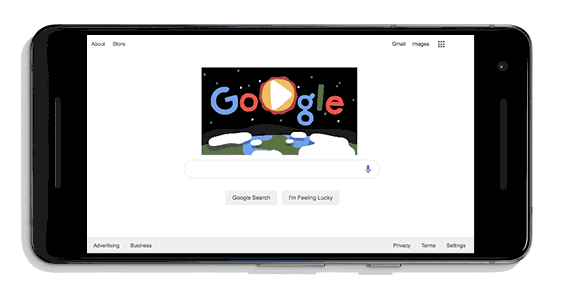Earth Day Doodle Celebrates Extreme Animal Life

From towering treetops to buried caverns, Earth harbors rich and varied environments that host diverse communities of organisms. Some of these unusual creatures will be visiting a computer screen near you for Earth Day (April 22), in a new Google Doodle.
The Doodle features six forms of life that inhabit a range of habitats at different elevations around the planet, and each of these animals and plants demonstrate unique adaptations that help them to survive.
As the animation travels from Earth's greatest heights to its deepest depths, it lends viewers an endearing perspective on global ecosystems and their inhabitants. [Mother Earth: 5 Fun Facts About Earth Day]
The Doodle kicks off with a view of Earth from space, before plunging through the atmosphere; high above the ground soars a wandering albatross (Diomedea exulans), which has the widest wingspan of any living bird — about 11 feet (3 meters) on average, according to the National Audubon Society.
Another organism featured in the Doodle that reaches impressive heights is the coastal redwood (Sequoia sempervirens). These evergreen trees can live up to 2,000 years old and can grow to 379 feet (116 meters) tall; they are among the oldest and tallest trees on Earth, the National Parks Service reported.
The animation also visits a coelocanth, a type of fish that has existed on the planet for 407 million years, and a frog from Papua New Guinea called Paedophryne amauensis; measuring about 0.3 inches (8 millimeters in length), this tiny amphibian is Earth's smallest vertebrate.
- Eight Energy-Saving Tips to Make Every Day Earth Day
- Happy Earth Day! 6 Books to Read to Celebrate the Planet
- 10 Ways You Can Improve Earth's Health
Originally published on Live Science.
Get the world’s most fascinating discoveries delivered straight to your inbox.

Mindy Weisberger is a science journalist and author of "Rise of the Zombie Bugs: The Surprising Science of Parasitic Mind-Control" (Hopkins Press). She formerly edited for Scholastic and was a channel editor and senior writer for Live Science. She has reported on general science, covering climate change, paleontology, biology and space. Mindy studied film at Columbia University; prior to LS, she produced, wrote and directed media for the American Museum of Natural History in NYC. Her videos about dinosaurs, astrophysics, biodiversity and evolution appear in museums and science centers worldwide, earning awards such as the CINE Golden Eagle and the Communicator Award of Excellence. Her writing has also appeared in Scientific American, The Washington Post, How It Works Magazine and CNN.


